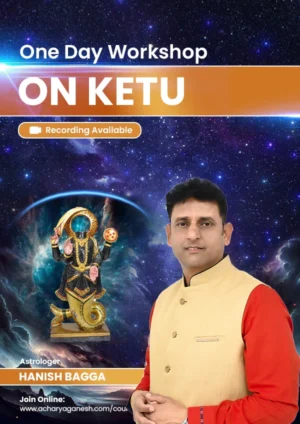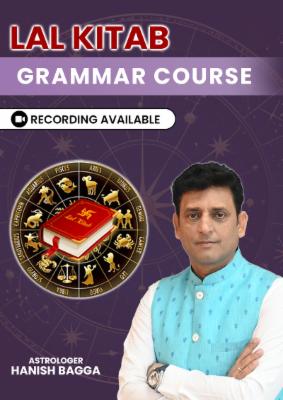- Introduction to Ganesh Puja Mantra
- Understanding Ganesh Puja
- The Power of Mantras in Ganesh Puja
- Essential Ganesh Puja Mantras
- How to Chant Ganesh Puja Mantras
- The Benefits of Regular Ganesh Puja Mantra Practice
- Incorporating Ganesh Puja Mantras into Daily Life
- Conclusion: Embracing the Power of Ganesh Puja Mantras
Introduction to Ganesh Puja Mantra
Ganesh Puja is a significant ritual in Hindu culture, dedicated to honoring Lord Ganesha, the elephant-headed deity known for his wisdom, prosperity, and ability to remove obstacles. At the heart of this puja lies the recitation of powerful mantras that invoke the blessings of Lord Ganesha. In this comprehensive guide, we’ll explore the various Ganesh Puja mantras, their meanings, and how to incorporate them into your spiritual practice. Whether you’re new to Hindu traditions or a seasoned devotee, this article will provide valuable insights into the world of Ganesh Puja mantras.
Understanding Ganesh Puja
Before we delve into the mantras, let’s take a moment to understand what Ganesh Puja is all about. Ganesh Puja is a ritual performed to worship Lord Ganesha, one of the most beloved deities in the Hindu pantheon. This puja is often conducted before starting any new venture, as Lord Ganesha is believed to bring good fortune and remove obstacles from one’s path.
The Significance of Lord Ganesha
Lord Ganesha, also known as Vinayaka, Ganapati, or Pillaiyar, is easily recognizable by his elephant head and human body. He is revered as:
- The god of wisdom and intelligence
- The remover of obstacles
- The patron of arts and sciences
- The deity of beginnings
His unique appearance and gentle demeanor have made him one of the most popular gods in Hinduism, with devotees spanning across the globe.
The Power of Mantras in Ganesh Puja
Mantras are sacred sounds, words, or phrases that are believed to have spiritual and psychological benefits when chanted. In the context of Ganesh Puja, mantras serve as a means to connect with the divine energy of Lord Ganesha. These mantras are typically in Sanskrit, an ancient language with deep spiritual significance.
Why Chant Ganesh Puja Mantras?
Chanting Ganesh Puja mantras is believed to:
- Invoke the blessings of Lord Ganesha
- Purify the mind and surroundings
- Enhance concentration and focus
- Remove obstacles in one’s life
- Bring prosperity and success
Now, let’s explore some of the most important Ganesh Puja mantras and their meanings.
Essential Ganesh Puja Mantras
1. The Ganesh Mool Mantra
“ॐ गं गणपतये नमः”
(Om Gam Ganapataye Namaha)
This is one of the most fundamental and powerful Ganesh mantras. It translates to “Om, I bow to Lord Ganesha.” This mantra is often used to begin any Ganesh Puja or meditation focused on Lord Ganesha.
2. The Ganesh Gayatri Mantra
“ॐ एकदन्ताय विद्महे, वक्रतुण्डाय धीमहि, तन्नो दन्ती प्रचोदयात्”
(Om Ekadantaya Vidmahe, Vakratundaya Dhimahi, Tanno Danti Prachodayat)
This mantra is a prayer to the one-tusked, curved-trunk deity (Lord Ganesha) to enlighten and guide us. It’s often chanted to gain wisdom and remove obstacles.
3. The Sankatahara Ganesha Mantra
“ॐ गं गणपतये नमः संकटहर गणपति सर्वजनमे वशमानय स्वाहा”
(Om Gam Ganapataye Namah Sankatahara Ganapati Sarvajaname Vashamanaya Svaha)
This mantra is specifically chanted to remove obstacles and difficulties. It’s particularly useful when facing challenges or starting new endeavors.
4. The Ganesha Shadakshari Mantra
“ॐ श्रीं ह्रीं क्लीं ग्लौं गं गणपतये वर-वरद सर्वजनं मे वशमानय स्वाहा”
(Om Shreem Hreem Kleem Glaum Gam Ganapataye Vara-Varada Sarvajanam Me Vashamanaya Svaha)
This powerful six-syllable mantra is believed to bestow success, prosperity, and the fulfillment of desires.
How to Chant Ganesh Puja Mantras
Chanting Ganesh Puja mantras is a practice that requires dedication and respect. Here are some guidelines to help you get started:
- Choose a quiet place: Find a peaceful spot where you won’t be disturbed during your practice.
- Set up a small altar: If possible, create a simple altar with an image or statue of Lord Ganesha, along with some flowers and incense.
- Sit comfortably: Adopt a comfortable seated position, preferably with your spine straight.
- Focus on your breath: Take a few deep breaths to center yourself before beginning the chant.
- Start with Om: Begin your chanting session by intoning “Om” three times to create a sacred atmosphere.
- Chant the mantra: Recite your chosen Ganesh Puja mantra clearly and with focus. You can use a mala (prayer beads) to keep count if you wish.
- Maintain rhythm: Try to maintain a steady rhythm as you chant. This helps in creating a meditative state.
- Visualize Lord Ganesha: As you chant, try to visualize Lord Ganesha in your mind’s eye. This enhances the connection to the deity.
- End with gratitude: Conclude your chanting session by expressing gratitude to Lord Ganesha.
Remember, consistency is key in mantra practice. Even a few minutes of daily chanting can yield significant benefits over time.
The Benefits of Regular Ganesh Puja Mantra Practice
Incorporating Ganesh Puja mantras into your daily spiritual routine can bring about numerous benefits:
- Increased focus and concentration: The repetitive nature of mantra chanting helps calm the mind and improve focus.
- Stress reduction: Chanting can be a form of meditation, helping to reduce stress and anxiety.
- Spiritual growth: Regular practice can deepen your connection to the divine and foster spiritual growth.
- Positive energy: Mantras are believed to create positive vibrations, enhancing the overall energy of your surroundings.
- Obstacle removal: As Lord Ganesha is the remover of obstacles, chanting his mantras is thought to help overcome life’s challenges.
- Improved memory: Some practitioners report improved memory and cognitive function with regular mantra chanting.
- Enhanced creativity: Lord Ganesha is associated with the arts, and invoking him through mantras may boost creativity.
Incorporating Ganesh Puja Mantras into Daily Life
While dedicated chanting sessions are valuable, you can also incorporate Ganesh Puja mantras into your daily activities:
- Morning ritual: Start your day by chanting a Ganesh mantra to set a positive tone.
- Before important tasks: Recite a short mantra before beginning important work or making decisions.
- During commutes: Use travel time to mentally chant mantras, turning a mundane activity into a spiritual practice.
- As a stress-relief tool: When feeling overwhelmed, take a few moments to chant a calming Ganesh mantra.
- Before meals: Some people like to chant a short mantra before eating as a form of gratitude.
Remember, the key is to make the practice personal and meaningful to you.
Conclusion: Embracing the Power of Ganesh Puja Mantras
Ganesh Puja mantras offer a profound way to connect with the divine energy of Lord Ganesha. Whether you’re seeking to remove obstacles, gain wisdom, or simply deepen your spiritual practice, these ancient Sanskrit verses provide a powerful tool for transformation.
As you embark on or continue your journey with Ganesh Puja mantras, remember that the most important aspects are sincerity, consistency, and respect for the tradition. Allow the vibrations of these sacred sounds to resonate within you, bringing peace, clarity, and positive change to your life.
May Lord Ganesha’s blessings be with you as you explore the beautiful world of Ganesh Puja mantras. Om Gam Ganapataye Namaha!
For interesting astrology-related videos, subscribe to us on Youtube
Common Questions About Ganesh Puja Mantras
Q1: How many times should I chant a Ganesh Puja mantra?
A: The number of repetitions can vary based on personal preference and tradition. Some common numbers include 108, 21, or 11 times. However, what’s most important is the sincerity and focus you bring to the practice.
Q2: Can I chant Ganesh Puja mantras if I’m not Hindu?
A: Yes, anyone can chant these mantras regardless of their religious background. The key is to approach the practice with respect and an open mind.
Q3: What’s the best time to chant Ganesh Puja mantras?
A: While you can chant at any time, early morning (during Brahma Muhurta, about 1.5 hours before sunrise) is considered particularly auspicious. Consistency is more important than the specific time of day.
Q4: Do I need to understand Sanskrit to chant these mantras?
A: While understanding the meaning can enhance your practice, it’s not necessary to understand Sanskrit to benefit from chanting. The vibrations of the sounds themselves are believed to be powerful.
Q5: Can I use recorded mantras instead of chanting myself?
A: While listening to recorded mantras can be beneficial, personal chanting is generally considered more powerful as it involves active participation and creates a stronger connection.
Q6: Are there any restrictions on who can chant Ganesh Puja mantras?
A: In general, there are no restrictions on who can chant these mantras. However, some traditions may have specific guidelines. It’s always best to approach the practice with respect and sincere intentions.
Q7: Can I combine different Ganesh Puja mantras in one session?
A: Yes, you can combine different mantras in a single session. Some practitioners like to start with the Ganesh Mool Mantra and then move on to other mantras.





















